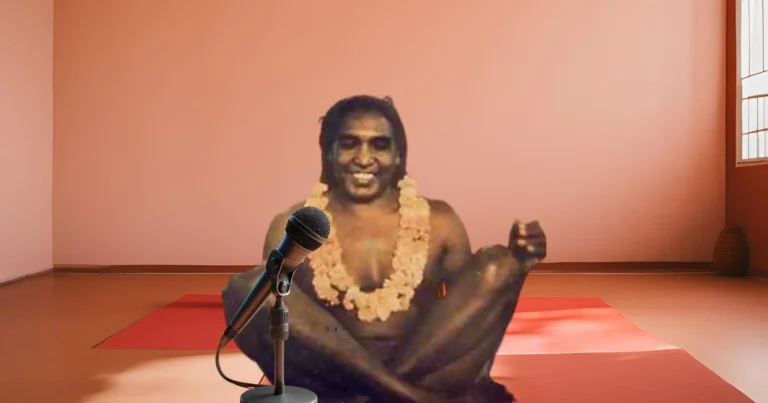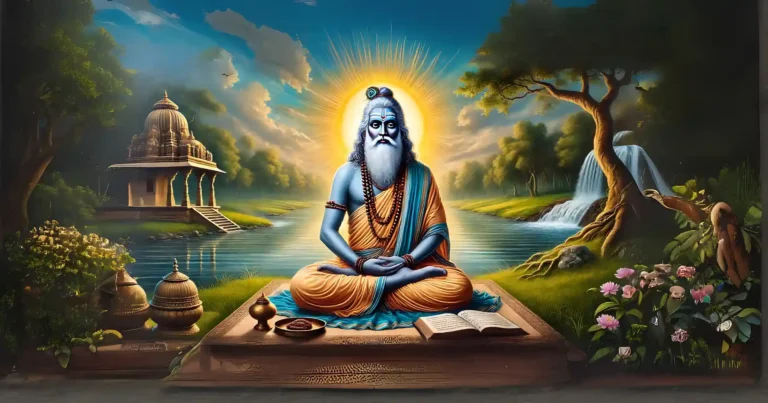Please Like the Blog and Share it for Maximum Reach
Table of Contents
The 8 Divine Tales About Sage Agastya
- Born of Divine Parentage: Sage Agastya is described as the son of Mitra-Varuna and Havirbhuva or born from a pot, signifying a divine origin.
- Swallowed the Ocean: To expose the demons hiding in the ocean, Agastya dried it up with his immense spiritual power.
- Cursed King Nahusha: Agastya cursed the arrogant King Nahusha to become a snake due to his disrespectful behavior toward sages.
- Guided Sri Rama: Provided Lord Rama with divine weapons and mantras, including the Aditya Hridaya Stotram, crucial for defeating Ravana.
- Created Tamil Grammar: Agastya is credited as the father of Tamil language and culture, composing its grammar and enriching its literature.
- Destroyed Demons: Helped the Devas by eliminating demons tormenting sages, thus restoring dharma.
- Narrated Puranas: Shared valuable Puranic stories and Vedic wisdom with Sri Rama and others, emphasizing righteous living.
- Ideal Sadhu and Guru: Exemplified humility, one-pointed devotion to the Lord, and guided disciples like Sutikshana toward liberation.
Birth of Sage Agastya
Maharishi Agastya completely realized the Vedic Scriptures. In the Vedic parlance he was a “Drashta” (दृष्टा seer of the Vedas). So, it will be interesting to learn about him. There are many interesting stories relating to his birth. One of them suggests : He was born along with Sage Vashishtha. Mitra and Varuna are his parents and he born inside a pot.
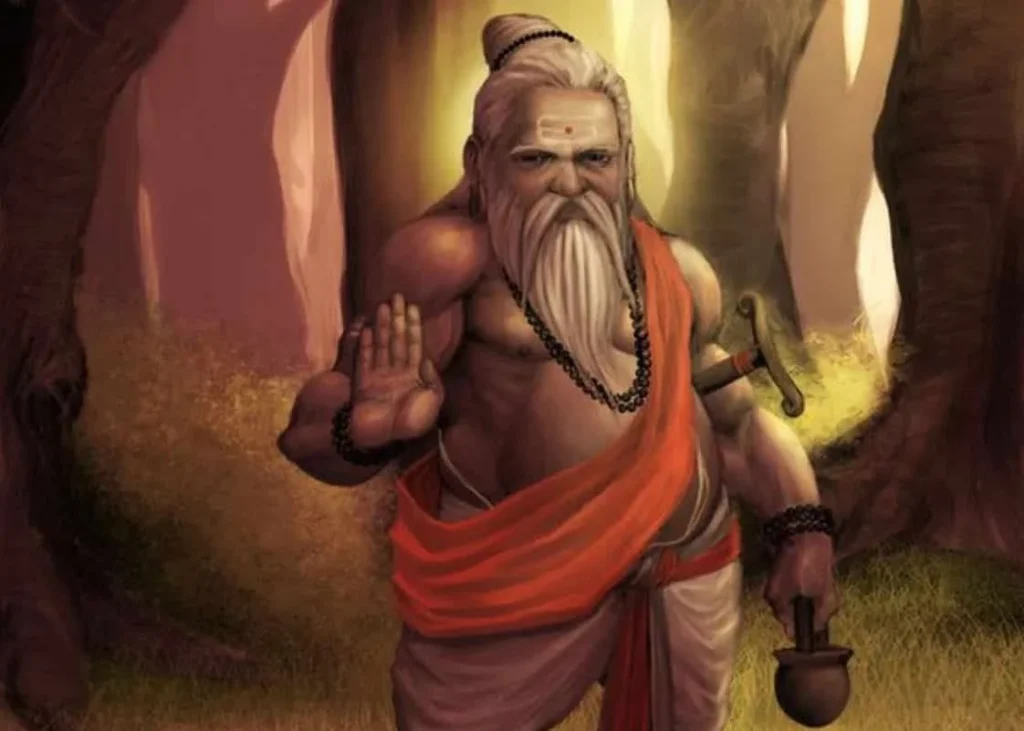
Another story describes that Sage Agastya emerged from the womb of Havirbhuva, wife of Sage Pulastya.Some Puranas serve as evidence towards this statement. There is a mention that during the reign of Swayambhuva Manu (we are now under the reign of Vaivasvat Manu), sage Agastya established himself as the able son of sage Pulastya.
Why Are There so Many Stories?
Many sages, by the same name have different parents, relatives, associated with extremely different events. They are part of different anecdotes in the various Puranas. It is possible that this reference can become a point of confusion. But, there is actually no confusion or disagreement.
There are different Kalpas (a Kalpa is one day of Brahma). Sage Agastya, Sage Pulastya, Sage Vishwamitra or any prominent sage appear on each day of Brahma or during multiple Manvantaras. With the end of the particular Manvantara or Kalpa, these prominent personalities, disappear.
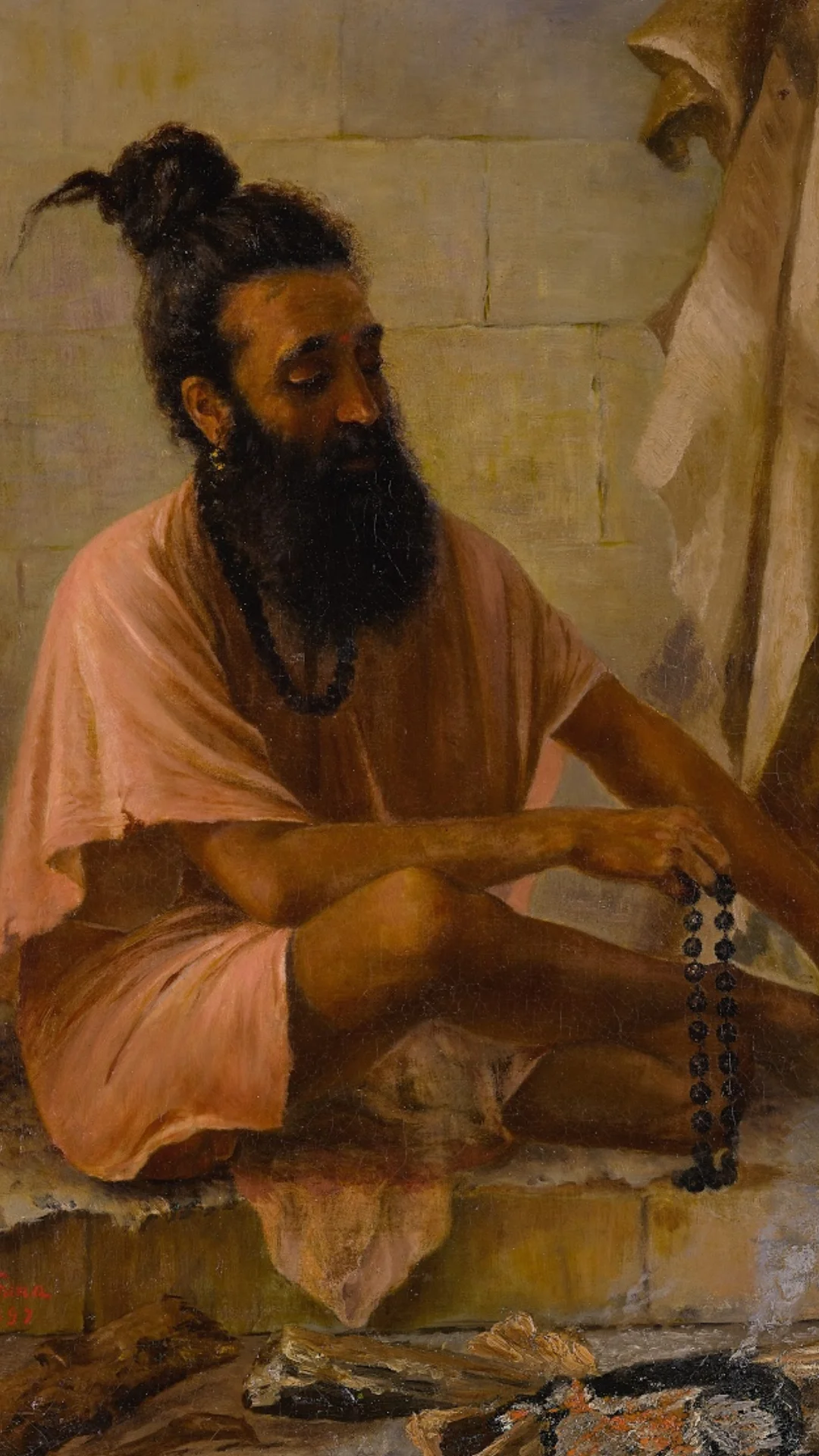
They accept the same name in a different Kalpa. But, their pastimes, parents, and history, every time they appear in a particular Kalpa or Manvantara might differ. The person remains the same but enacts different pastimes. However, the pastimes may repeat tmenselves despite the change in time. Hence, if one cannot understand this, one might face apparent confusion.
8 Questions from Sanatana Dharma
The scores generated in this Quiz are absolute. There are right or wrong answers to each Question. A percentage towards 100 indicates that you are more aligned to the overall subject matter.
Puranas: The Perfect source of Knowledge
There is no dichotomy in the Puranas when it discusses the life of a particular Sage or a Rishi. The Story may have many variations because the life-story discussed regarding the specific Kalpa or Manavantara may differ, especially regarding when and how the sage appeared. The Puranas and all other Vedic scriptures never contradict each other.
One cannot expound pastimes of these great rishis. They are just like the Lord and their greatness is immeasurable. Yet, the scriptures try describing certain aspects of their life so that man gets some guidance. These stories are an interesting means through which we get to learn subtle aspects of life.
Story of Demon Vritrasura and Sage Agastya
There is a story of a fearful demon, known by the name Vritarasura. Though he was a demon he had within his heart, great Shraddha (Bhakti) for the Lord. However, the King of Devatas, Indra slew him. Let us rewind the story a bit. There arose a fierce battle between the two personalities, Indra and Vritrasura.
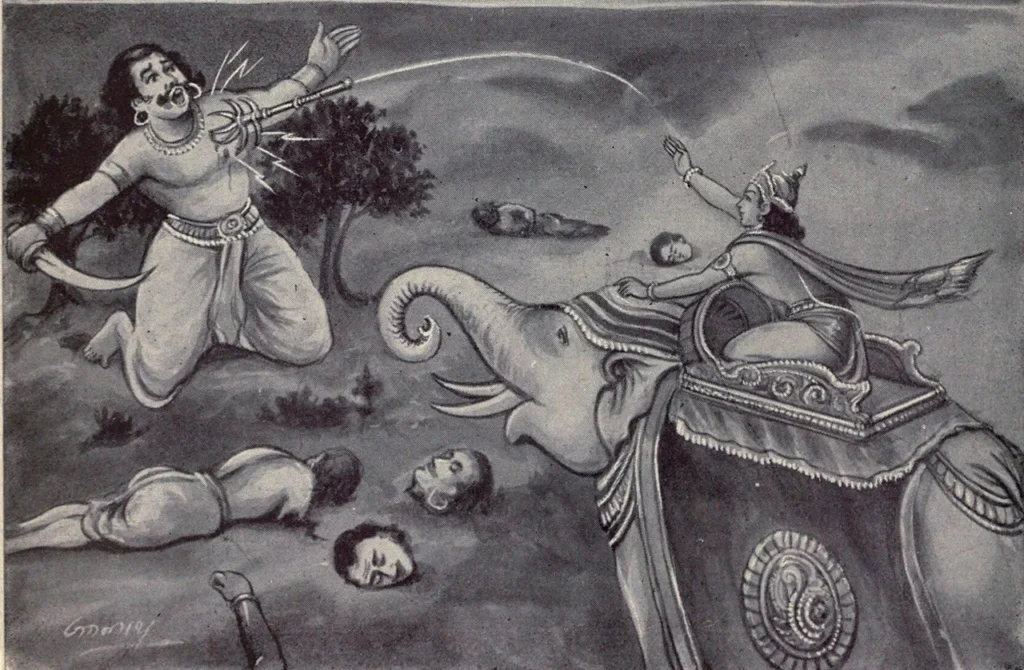
A demon by the name Kaley took refuge in the ocean fearing Indra’s might. This demon would suddenly appear from nowhere and at odd times attack sages who performed severe austerities and fire sacrifices (Yajna). The demon associates of Kaley tormented the whole Vedic community.
Agastya Gulps the Mighty Ocean
These demons attacked the Ashram of Vashishtha, Chyawan (father of Ayurveda), Bharadwaj and others. Many innocent sages became their diet. This heinous crime had sort of become their daily routine. The Devatas could not receive the Yajna-offerings because the entire ascetic community suffered the malicious crimes of the demons.
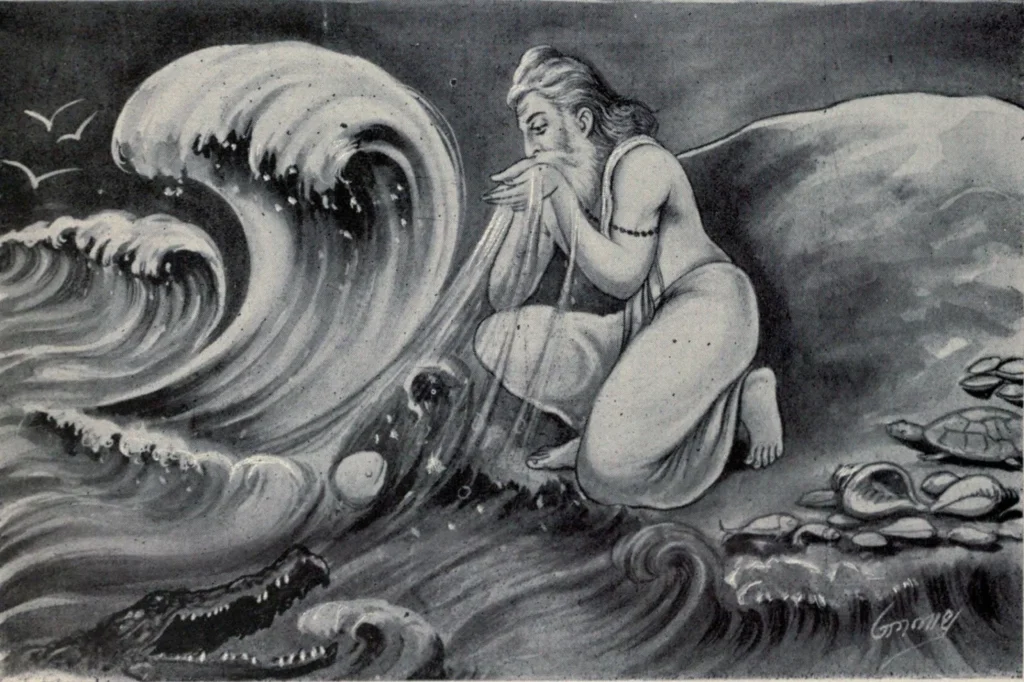
Hence, the Devatas approached sage Agastya for help. The Devatas expressed the pitiful state of the rishis to Sage Agastya which deeply moved him.
The Sage appeared at the shore of the ocean where the demons took refuge after battling with Indra. Agasta placed the tip of his cupped palm into the ocean water and sucked it by placing his lips at the base of his palm.
Such was his might and prowess.
When the sage sucked the ocean dry, all the demons lay on the barren land, immediately exposed! The Devatas immediately slew some demons, and the remaining fled to Patala Loka (पाताल लोक) or the netherworlds.
Indra Banished from Swarga
Once, the King of Devatas, Indra banefully gained the sin of Brahm-Hatya (ब्रह्महत्या), sin of killing a Brahmana. Because of this atrocious sin he ought to lose the kingship of Swarga. A King of Swarga requires an outstanding balance of Punya. But, Brahmahatya resets all Punya to nil.
Other than the displaced position of Indra deva, only Nahusha, an earthly king, from the Lunar Dynasty had performed 100 Ashwamedh Yajnas, a qualification to occupy the seat, of the Devatas, Indra. This promoted Nahusha, who was then the king on the earthly plane to the abode of Swarga. Immediately the coronation ceremony took place, and became the leader of the Devatas, the King of Swarga, quite effortlessly. Nahusha became proud of his newly gained position and power conferred upon him by the wheels of time.
Nahusha Desires Sachi as his Queen
Overpowered by vanity, authority and lust, the short-sighted King Nahusha tried to force Sachi Devi (wife of the former Indra) into a wedlock with him. Sachi was being continuously tormented by the new King until she gave a ‘yes’ to the king’s proposal. So, she consulted the preceptor of the Devatas, Sage Brihaspati. The queen tricked the king now, at the behest of Sage Brihaspati.
After the meeting, she put forth an intelligent offer to Nahusha, after accepting which the foolish King could have her as his queen.
Sachi asked Nahusha to ride on the shoulders of the Rishis and then propose to her. Nahusha heartily accepted the offer and fell prey to his miscalculation. He assumed the rishis are ignorantly non-violent beings and that they do not care for their own prejudices.
Why did Sage Agastya Curse King Nahusha?
To fulfil the offer made by Sachi, He arranged a group of Rishis who agreed to carry him on their shoulders. They began their travel. On their way, an old rishi who carried the hefty king on his shoulder, began panting. Nahusha overtaken by his lust for Sachi Devi started losing his calm. He spat out harsh words: “Sarp, Sarp” (सर्प-सर्प) which in Sanskrit also meant “Faster, Faster”.

He kicked the old sage in his anxiety as he wanted him to speed up. This unpleasant event was quietly being watched by Sage Agastya, seated in his hermitage. He could not bear this grave insult and thus immediately issued a curse. Burning with anger, the great sage said: Nahusha, you foolish king, become a Sarp (सर्प Snake) instantly”. The king thus paid for his ill-doings.
This curse of Sage Agastya was an eye-opener to all those deluded by their pride and prejudices.
Love of Agastya for Sri Rama
Once, Lord Rama, during his 14 year banishment from the kingdom of Ayodhya, arrived at the hermitage of sage Agastya. Sri Rama offered obeisance to the great sage and worshipped his feet. He had intense Bhakti towards sages and the blessed Rishi became a recipient of the Lord’s tender love.
Sage Agastya conferred upon the Lord the many secrets of divine weapons along with the mantras to invoke them. These gifts that Agastya gave upon the Lord proved to be useful in His battle with Ravana.
One such weapon was the great Aditya Hrudaya Stotram that Sri Rama had to recite at dawn that infused the power of the Sun into the Lord. The Lord is the Lord and does not need any exterior Stotram to support Him. He is all-capable. Yet such pastimes glorify the sages and their hymns, that have great potency and the Supreme Lord sanctions them. Thus this is a tribute for Sage Agastya and the Aditya Hrudayam. Sage Agastya addressed Sri Rama as “Sri Raghavendra” while composing different hymns in praise of Him.
Sage Agastya writes on Sri Rama
One hymn goes something like this,“Only those souls dedicated to the Lotus feet of Sri Rama, those who chant the holy names of Sri Raghavendra, can develop accurate knowledge. Nobody else can become a vessel to receive Bhagawan’s grace. Those beings surrendered to Sri Raghavendra get Liberated, none else.
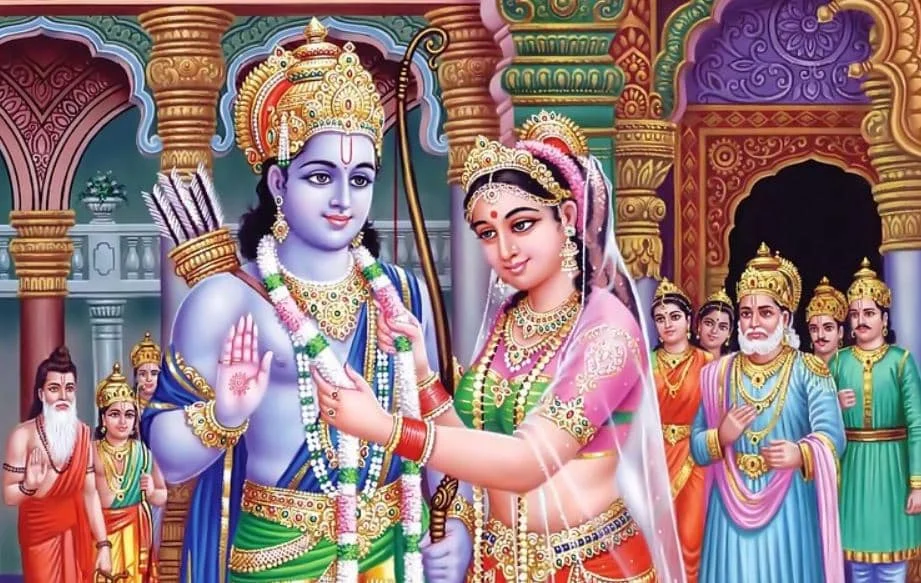
Without the sweet ambrosia of Bhakti, towards the Lotus feet of Sri Rama, one cannot come close to liberation. The principal cause for love towards the Lord and attaining Liberation is Sadhu Sanga (साधु-संग Holy association of sages) alone. An interesting video to watch on our channel will be The Three Types of Devotees in Bhakti | Incarnations and Expansions of Lord Krishna
Agastya describes qualities of a True Sadhu
One can recognize a Sadhu by his one-pointedness towards the divine. He is free of any malice. He never puts down others and has a balanced approach. The Sadhu is never hypocritical and remains focused on the welfare of whoever approaches him. He is free from greed and selfishness and his food is the glorification of the Lord and His pastimes.
The true devotees, the Sadhus remain contented with whatever they have and find grace even in the most tormenting situations of life. Sri Rama, you are the Lord of such Sadhus. You are their protector. Oh Rama, You are my only object of Life. Let my love and surrender to Your Lotus feet be eternal. This can be my only success.
By having your Darshanam, I am truly blessed. All my Yajna has come to fruition today. Sita Devi along with You should live in my heart always. Let me never forget “Sita-Rama” even for a moment.”
Glories of Sage Sutikshana, disciple of Sage Agastya
Sutikshana, the prime disciple of Sage Agastya was a Bhakta of Sri Sita-Rama. Whenever, devotees remember Sage Sutikshana, they remember him as one of the greatest devotees of Sita-Rama. By praying thus, the hearts of the most fallen gets purified. Such is the power of the pure devotees of the Lord.
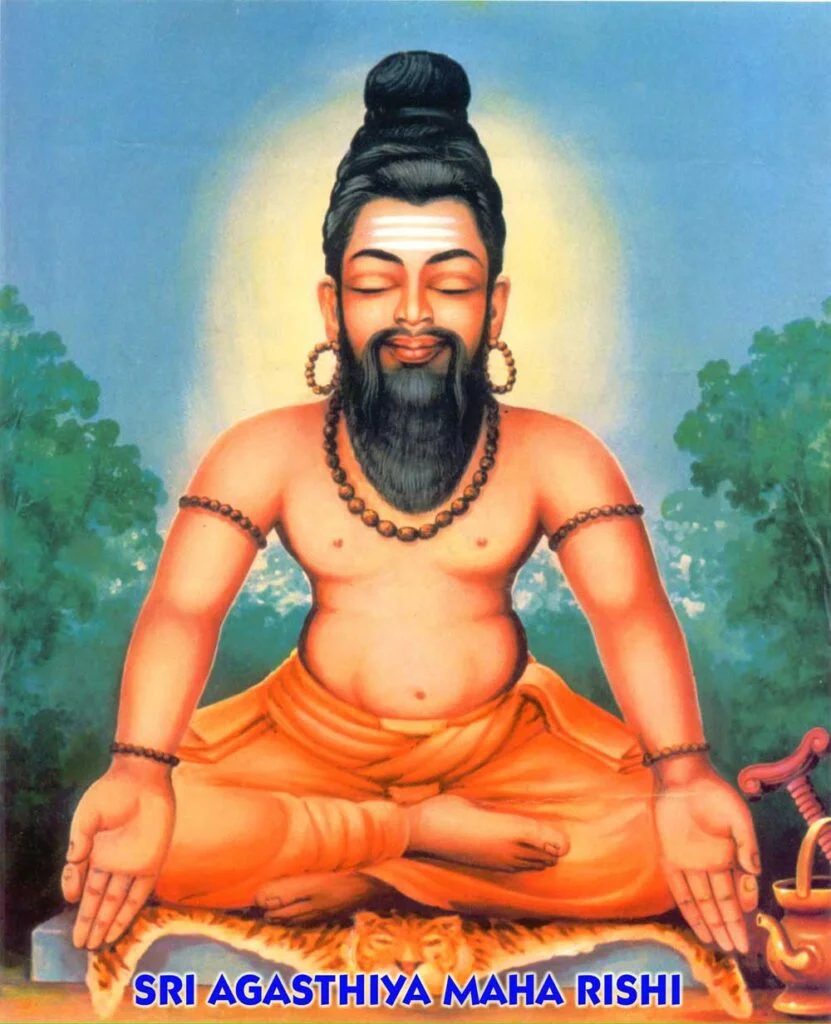
On his return from Lanka, the Lord’s coronation took place as the King of Ayodhyaji. To witness this divine ceremony, Sage Agastya was traveling to Ayodhya. He spent a great deal of time in the kingdom. He narrated many stories from the Puranas to the Lord and thus did Satsanga. We can hear them too. Sage Agastya to Sri Rama mostly narrated the stories mentioned in Uttara-Kanda of Valmiki Ramayana.
Hearing the pastime of such an exalted Sage like Sage Agastya, the knower of the Vedas, who protected the whole of Deva Loka and above all who has been in proximity with the Lord and other devotees, is indeed the highest worship.
Please Like the Blog and Share it for Maximum Reach
You display your love by reading this valuable material. So kindly read and consider financially supporting us to keep our efforts going with renewed vigor! Supporters in India can donate via Razorpay while those abroad can use PayPal!




